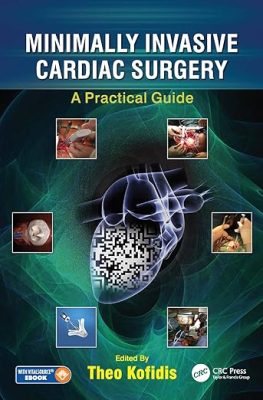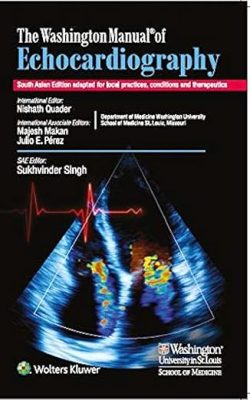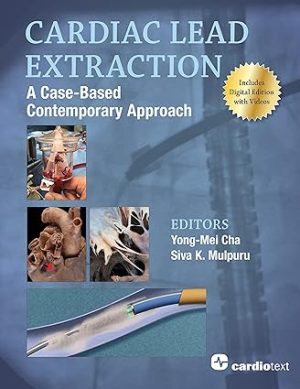Tag: Cardiology
Minimally Invasive Cardiac Surgery: A Practical Guide
surgeon form “heart teams” to provide patients with novel, minimally invasive procedures, with all their benefits.
Less invasive techniques are often complex and require special knowhow and skills. This book offers an innovative approach to learning, utilizing QR code technology, which refers the reader to essential audio-visual material, which, along with the didactic text, focuses on practical aspects of minimally invasive cardiac surgery. In modern Heart Teams, and with the advent of the hybrid era, surgeons will only be able to survive if they have state-of-the-art skills in less invasive technologies, which can be incorporated in the hybrid theatre and/or trans-catheter arena. This text accompanies the surgeon along this path, and provides clinical advice and practical solutions, beyond the necessary basic knowledge. Which courses to visit, which videos to watch, which centres to join for serious training? How best to exploit public and multimedia? How to consent a patient into a MICS procedure? How to set up a MICS program or practice? In the era of value driven outcomes, and a shift towards shorter and better patient journeys, MICS is a skill that no heart surgeon can be without.
Minimally Invasive Cardiac Surgery: A Practical Guide
is a teaching resource, reference book and manual written by surgeons who both operate and teach the procedures described within.
- Provides access to online resources via QR codes
The Washington Manual of Echocardiography (SAE) – 1E
MRI and CT of the Cardiovascular System Third Edition
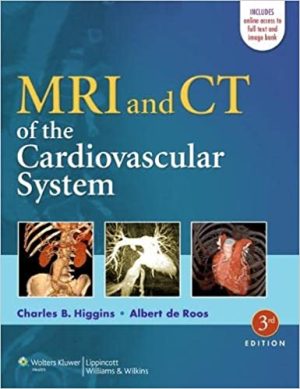 Leave no disease undetected withMRI and CT of the Cardiovascular System, your definitive guide to magnetic resonance and computed tomography for cardiovascular health. Authored by a collaboration of international experts, this vivid, four-color third edition imparts the latest technologies in a rapidly advancing field. With topics that range from anatomy, to MR in infants and children, to risk assessment in ischemic heart disease this text includes seven new chapters to reflect the rising tide of technological discovery as it pertains to cardiology. Thanks to its expert analysis, procedural guide to implementation, and profound understanding of the recent advances in cardiovascular imagining,MRI and CT of the Cardiovascular Systemgives you all the tools necessary for powerful screening, diagnosis, and cardiovascular care.
Leave no disease undetected withMRI and CT of the Cardiovascular System, your definitive guide to magnetic resonance and computed tomography for cardiovascular health. Authored by a collaboration of international experts, this vivid, four-color third edition imparts the latest technologies in a rapidly advancing field. With topics that range from anatomy, to MR in infants and children, to risk assessment in ischemic heart disease this text includes seven new chapters to reflect the rising tide of technological discovery as it pertains to cardiology. Thanks to its expert analysis, procedural guide to implementation, and profound understanding of the recent advances in cardiovascular imagining,MRI and CT of the Cardiovascular Systemgives you all the tools necessary for powerful screening, diagnosis, and cardiovascular care.
Features:
–New chapters reflecting technological discoveries in cardiology
–Color illustrations for heightened clarity
–Companion website with fully searchable text
–Units organized by pathology and disease detection
–Fully updated information on application of MR and CT
–Up-to-date analysis of emerging multi-detector CT
Making Sense of the ECG: A Hands-On Guide 5th Edition
Making Sense of the ECG: A Hands-On Guide 5th Edition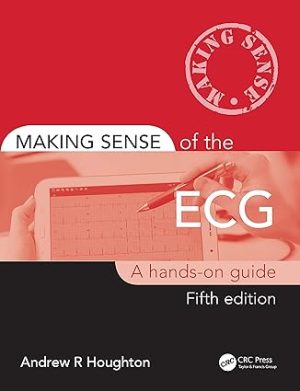
Interpreting an ECG correctly and working out what to do next can seem like a daunting task to the non-specialist, yet it is a skill that will be invaluable to any doctor, nurse or paramedic when evaluating the condition of a patient. Making Sense of the ECG has been written specifically with this in mind, and will help the student and more experienced healthcare practitioner to identify and answer crucial questions. This popular, easy-to-read and easy-to-remember guide to the ECG as a tool for diagnosis and management has been fully updated in its fifth edition to reflect the latest guidelines.
Hough’s Cardiorespiratory Care: an evidence-based, problem-solving approach 5th Edition
Hough’s Cardiorespiratory Care: an evidence-based, problem-solving approach 5th Edition

The latest edition of this must-have text book promises an evidence-based and practical approach covering the very latest in cardiorespiratory care.
The textbook covers a wide range of cardiorespiratory conditions and discusses treatment of patients in different clinical settings such as critical care, the ward area and out-patient departments. It begins with physiology and pathology and progresses into a detailed patient assessment section and a discussion of specific respiratory and cardiac conditions. The final section covers different groups of people who may require physiotherapy such as infants, children, and adults with specific conditions including a considered section on palliative care.
Critical thinking is facilitated by clinical reasoning boxes in the text, and problem-solving is aided by case studies at the end of each chapter. There are also relevant practice tips to enable transfer of learning into the clinical environment. The text is supported by over 280 line drawings and diagrams along with over 70 x-rays and photographs to further illustrate the points under discussion.
- Q & A case studies, with scans and x-rays
- Outcome measures for problems and diseases
- Boxes with learning and practice tips to encourage reflection
- Tables with definitions, normal values and comparisons
- Practical techniques described with precision
- Expanded cardiovascular section
- Updated practical details on physiotherapy techniques
- Extra chapters on surgical complications and interventions
- Comprehensive coverage of Critical Care procedures and rehabilitation
- Practicalities of the management of children and infants
Update on the evaluation of outcomes
The Only EKG Book You’ll Ever Need 9th Edition
The Only EKG Book You’ll Ever Need 9th Edition
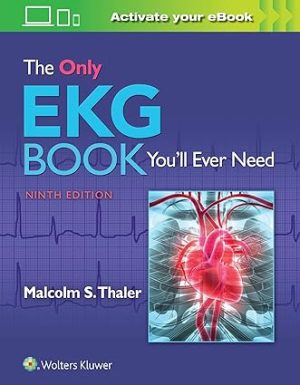
Clear and concise, The Only EKG Book You’ll Ever Need has provided quick and accurate discussions on using an EKG to diagnose cardiac and non-cardiac conditions for nearly 30 years. This ninth edition is packed with full-color illustrations, real-world clinical scenarios, and step-by-step instructions—giving you the practical guidance you need to use an EKG in actual clinical settings with patients.
Outlines processes for identifying and interpreting arrhythmias, myocardial infarctions, hypertrophy, atrial fibrillation, and other disorders.
Features a lighthearted, lively writing style designed to be compelling and minimize confusion of principles discussed.
New content added to reflect recent clinical and technological advancements.
Depicts real-life clinical situations and provides important clinical context for EKG use.
Advises on the dangers of over-reliance on computer interpretations and includes many other practical considerations that other books leave out.
New EKG cases available in the companion eBook illustrate key concepts discussed throughout the book.
Enrich Your eBook Reading Experience with Enhanced Video, Audio and Interactive Capabilities
Read directly on your preferred device(s), such as computer, tablet, or smartphone.
Easily convert to audiobook, powering your content with natural language text-to-speech.
Adapt for unique reading needs, supporting learning disabilities, visual/auditory impairments, second-language or literacy challenges, and more.
Electrocardiography of Arrhythmias: A Comprehensive Review: A Companion to Cardiac Electrophysiology 2nd Edition
Electrocardiography of Arrhythmias: A Comprehensive Review: A Companion to Cardiac Electrophysiology 2nd Edition
Easy to read and abundantly illustrated, Electrocardiography of Arrhythmias: A Comprehensive Review, 2nd Edition, provides the core knowledge and clinical competencies you need to accurately interpret ECGs in preparation for cardiology boards and clinical practice. World-renowned cardiologists Mithilesh K. Das and Douglas P. Zipes offer a concise yet definitive review of all the ECG basics with realistic scenarios and detailed explanations for a wide range of ECG applications. Use this outstanding review tool alone or as a companion to Cardiac Electrophysiology: From Cell to Bedside.
- Provides a solid understanding of normal electrocardiograms and common abnormal findings, preparing you to accurately interpret ECGs and ace the ECG part of cardiology boards or the ABIM ICE ECG certifying exam.
- Contains realistic cases that simulate the clinical exam experience, and each ECG includes a brief clinical history in board format.
- Features more than 250 ECGs that demonstrate virtually any arrhythmia you’re likely to encounter.
- Includes new ECGs covering intracardiac electrophysiology, atrial fibrillation, ablation of many arrhythmias, arrhythmias associated with valvular surgery, idiopathic PVCs, arrhythmias associated with structural heart disease, ARVC, Brugada syndrome, and others.
- Covers key topics such as AV conduction abnormalities, complex atrial and ventricular arrhythmias, idiopathic ventricular tachycardia, and inherited arrhythmia syndromes.
- Enhanced eBook version included with purchase. Your enhanced eBook allows you to access all of the text, figures, and references from the book on a variety of devices.
Cardiac Lead Extraction: A Case-Based Contemporary Approach
There is a worldwide increase in extraction procedures due to pacemaker or defibrillator leads becoming infected or dysfunctional. This visual atlas with 26 illustrative cases informs cardiology providers about the latest techniques and tools available for the procedure. The teaching objectives of this book will guide the reader to:
- Plan a lead extraction procedure based on the individual case.
- Review detailed technical aspects of a lead extraction procedure.
- Troubleshoot challenging and complex cases.
- Develop strategies to prevent, diagnose, and manage complications associated with lead extraction procedures.
The book will serve as an easy reference guide for cardiac electrophysiologists, cardiologists, anesthesiology providers, allied health staff members, fellows, and surgeons performing lead extraction procedures. Also included is a special section on team dynamics and the valuable role of allied health providers in lead extraction procedures.
The ability to learn from the collective wisdom of the lead extraction community is a game-changer…This compendium showcases a breadth of techniques and expertise that extends far beyond what any individual could achieve. From the Foreword, Joshua M. Cooper, MD
Illustrated with 220 videos and 235 figures.
The editors, Yong-Mei Cha, MD, and Siva K. Mulpuru, MD, MPH, are at Mayo Clinic, Rochester, Minnesota.
The purchase of a new copy of this print book entitles the first buyer to free personal access to a digital version of this edition. Redemption instructions are included in the book.
Cardiac Mapping 5th Edition
Cardiac Mapping 5th Edition
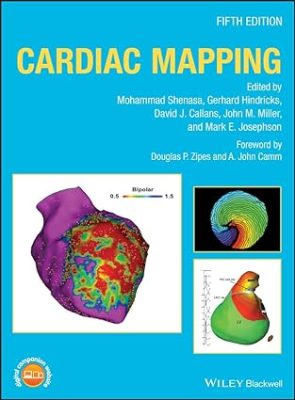
The expanded guide to cardiac mapping
The effective diagnosis and treatment of heart disease may vitally depend upon accurate and detailed cardiac mapping. However, in an era of rapid technological advancement, medical professionals can encounter difficulties maintaining an up-to-date knowledge of current methods. This fifth edition of the much-admired Cardiac Mapping is, therefore, essential, offering a level of cutting-edge insight that is unmatched in its scope and depth.
Featuring contributions from a global team of electrophysiologists, the book builds upon previous editions� comprehensive explanations of the mapping, imaging, and ablation of the heart. Nearly 100 chapters provide fascinating accounts of topics ranging from the mapping of supraventricular and ventriculararrhythmias, to compelling extrapolations of how the field might develop in the years to come. In this text, readers will find:
Full coverage of all aspects of cardiac mapping, and imaging
Explorations of mapping in experimental models of arrhythmias
Examples of new catheter-based techniques
Access to a companion website featuring additional content and illustrative video clips
Cardiac Mapping is an indispensable resource for scientists, clinical electrophysiologists, cardiologists, and all physicians who care for patients with cardiac arrhythmias.


